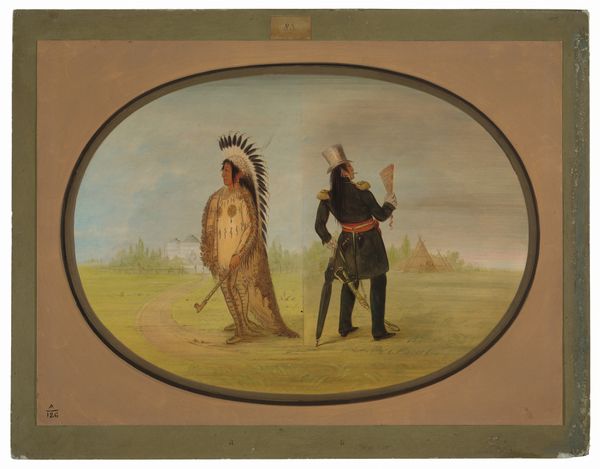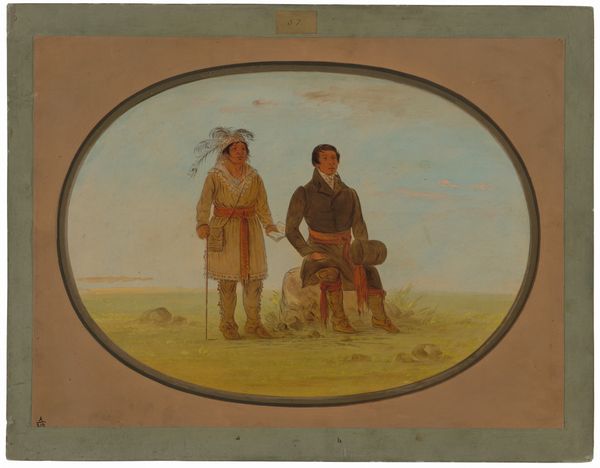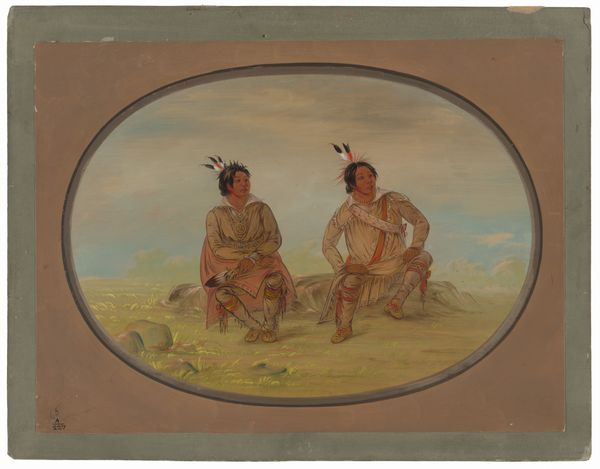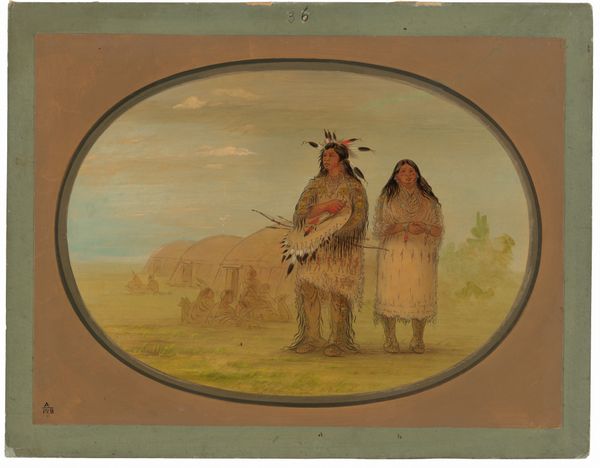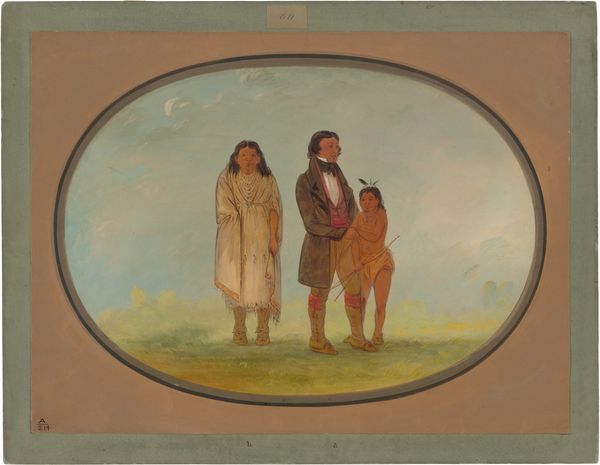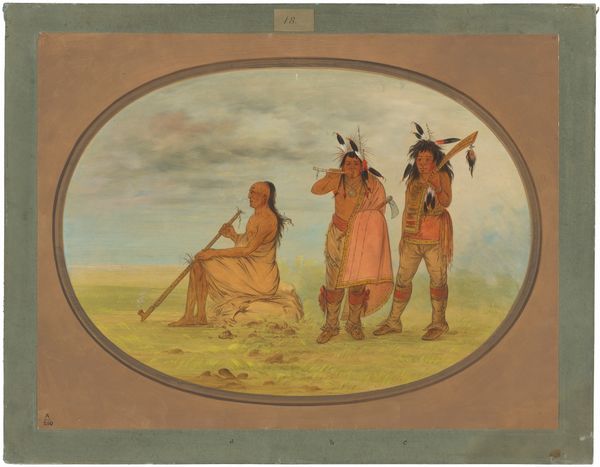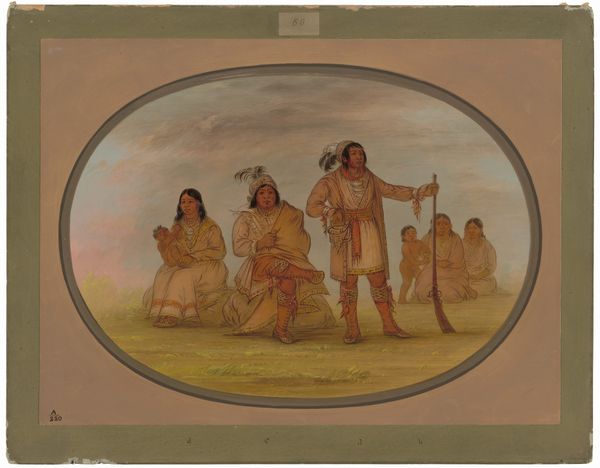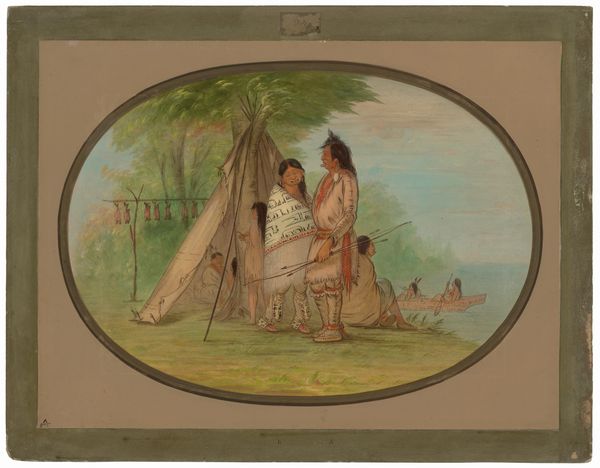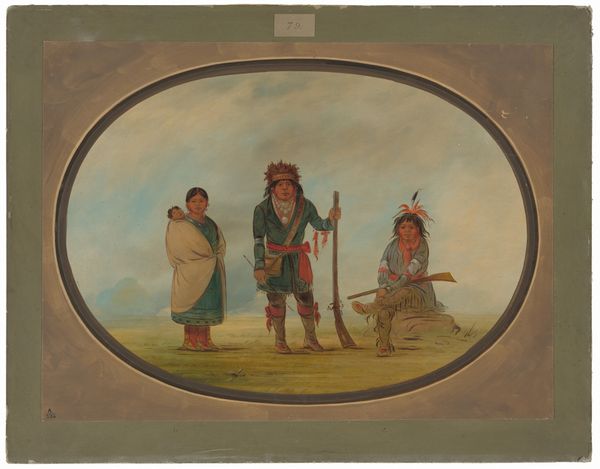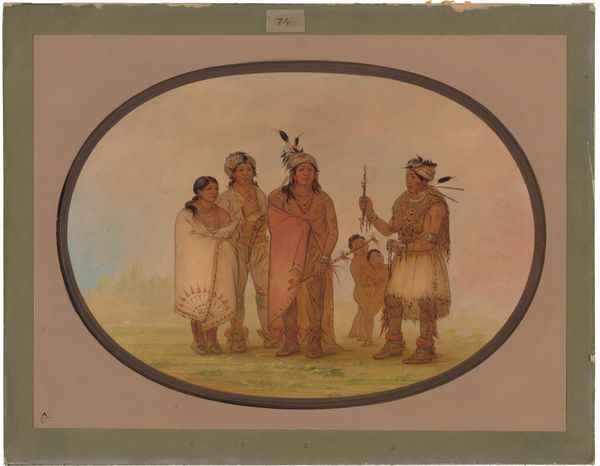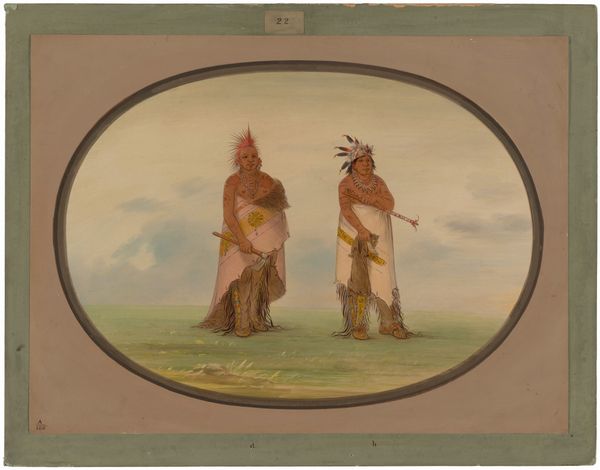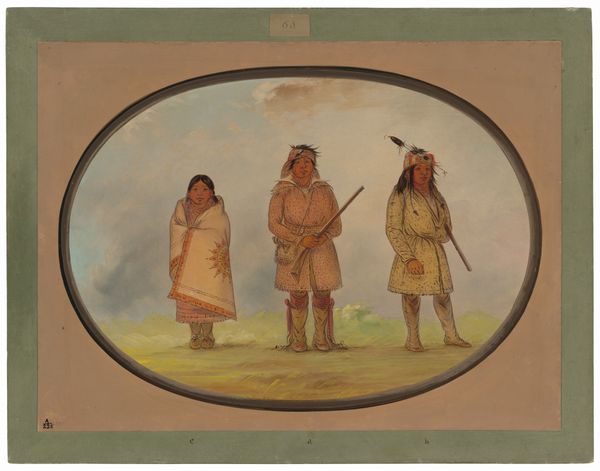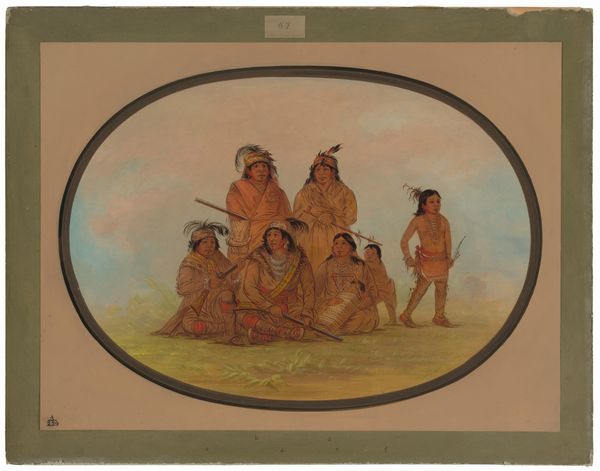
painting, gouache
#
portrait
#
water colours
#
painting
#
gouache
#
watercolor
#
indigenous-americas
Dimensions: overall: 47.5 x 64 cm (18 11/16 x 25 3/16 in.)
Copyright: National Gallery of Art: CC0 1.0
Curator: I find a deep melancholy emanating from this watercolor. It reminds me of lost histories, doesn’t it? Editor: Yes, a palpable stillness, like a paused breath. This artwork by George Catlin, made sometime between 1855 and 1869, is titled "An Old Nayas Indian, His Granddaughter, and a Boy." The romantic style softens a scene freighted with history. Curator: Catlin uses watercolor here to very effectively to capture the fragility of indigenous life facing cultural disruption. Observe the expressions—especially that of the granddaughter, with her body enfolding the sacred history inscribed across her dress. What kind of dialogue is that? Editor: I see the shawl not just as ornamentation, but also as an assertive visual act— a complex text that boldly proclaims identity. Its visibility is defiant. It asks us how institutions like museums interpret Native experiences. Who decides what stories are told, and how are they framed? Curator: That patterned text certainly complicates its semiotic presence. Does it function as a kind of ledger of ancestral knowledge in defiance of forced assimilation? I read it as embodying memory. Editor: It certainly acts as a social document, hinting at land disputes, treaty violations, and broken promises—an unsent letter for a future that demands reconciliation. The older man's adornment suggests a connection with natural leadership, reinforced by what looks to be his ceremonial staff. This image speaks of cultural wealth, despite the historical wrongs against the Nayas people. Curator: The old man embodies the continuity of Nayas culture—though it might now exist on the fringes of society. Do you perceive the boy here as symbolic? I find him interesting, given he does not appear related. Editor: I think this painting demands critical consideration. Can one really distill trauma in art? Curator: Ultimately, images such as this offer the viewer not resolution, but instead the burden of knowing. Editor: Knowing and then remembering – using the image as a prod toward civic duty, don't you think?
Comments
No comments
Be the first to comment and join the conversation on the ultimate creative platform.
